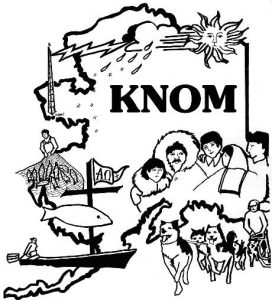 Nome’s only radio station has ruined other variety stations for me. I mean, in the span of 15 minutes this one small station pumps out a current pop hit, follows up with some Rolling Stones, moves to the top 5 songs from 1957, and finishes up the time slot with an elderly man telling an indecipherable story about a river in a heavy accent. When I finally come home, I’m just going to laugh at the stations that proudly declare to play music from the “80s, 90s, and Today!”
Nome’s only radio station has ruined other variety stations for me. I mean, in the span of 15 minutes this one small station pumps out a current pop hit, follows up with some Rolling Stones, moves to the top 5 songs from 1957, and finishes up the time slot with an elderly man telling an indecipherable story about a river in a heavy accent. When I finally come home, I’m just going to laugh at the stations that proudly declare to play music from the “80s, 90s, and Today!”
Sorry, what were we talking about last time? Ah yes! The difficulties I ran into with my experiment. If you recall, I had a problem: I needed to take data from shrubs at expanding distances from gyrfalcon nest but couldn’t walk far enough to cover the distances that I needed.
Problem, right? To make matters worse, I immediately and stubbornly decided that I had to figure this problem out for myself. While I could have immediately reached out to my advisor and asked for help, I thought that as a graduate student it was my responsibility to solve this problem on my own. I felt like this was the first real test of my worth as a scientist, and I had to think on my feet to prove I could hack it.
Of course, while I’ve never been short on pride I’m definitely not arrogant enough take such steps completely by myself. As soon as I thought I had a workable solution, I reached out to scientists at the School of Forestry and Environmental Studies, UHPSI, and my own lab to verify that I wasn’t making a mistake. All of them agreed that my solution would work. Therefore, I’m pleased to say that if you, dear reader, find any problems with my solutions I can place the blame squarely on their shoulders.
All right, enough hedging (Get it? Because of the shrubs? Hey, don’t make that face at me. I can make puns if I want to).
Instead of examining the distance of shrubs from a gyrfalcon nest, I switched to examine the distance of shrubs from every gyrfalcon nest – at the same time. Essentially, I let the Alaskan road system randomly select where my starting point for measuring shrubs would be. I got as close as possible to a gyrfalcon nest without leaving the road, and used that as my first data point for measuring shrubs. Then, I drove on the road in increments, taking shrub data every 3 miles until I had data for 6 miles in both directions near the road away from the gyrfalcon nest. This allowed me to create a patchwork of data points for shrubs across the landscape and analyze them based on the density of gyrfalcon nesting sites at those locations.
Sure, it might not be the cleanest solution. With more time and manpower at my disposal, I probably could have come up with a better method…but I’m proud of the solution nonetheless. I was actually pretty terrified about coming up to the field in Alaska, since I knew that there are always unforeseen obstacles that throw projects completely off course and I was scared of being unable to handle them. After dealing with this first problem, I became much more confident in my ability to conduct research on my own – and I think my work has improved because of it.
